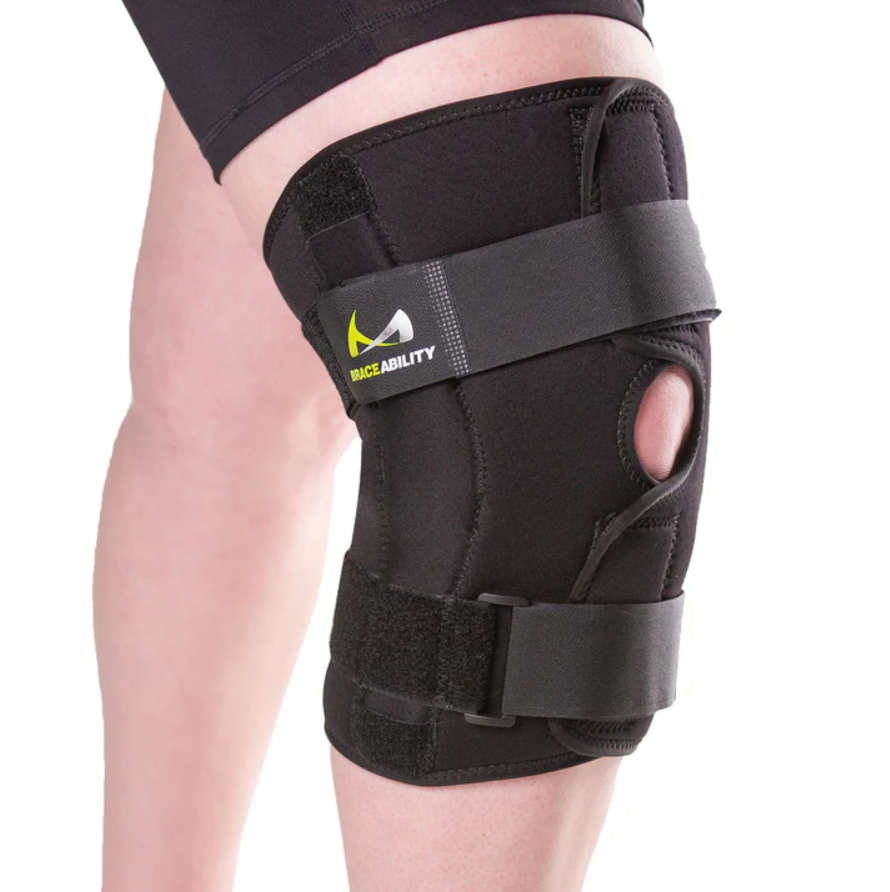In this article, we will discuss the topic of knee braces and how they can help you live a pain-free life. We will explore the different types of knee braces available, their benefits, and how to choose the right one for your needs. By the end of this article, you will have a better understanding of how knee braces can provide support and stability to your knees, alleviate pain, and improve your overall quality of life. Let’s dive in and discover the benefits of knee braces together.
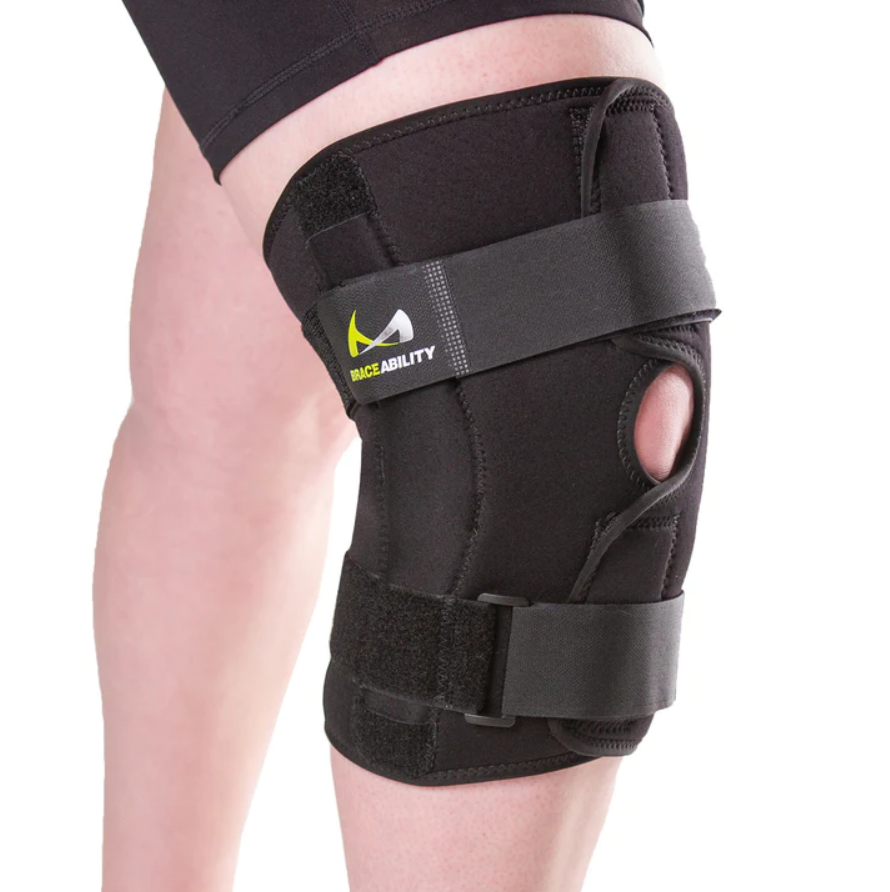
What are Knee Braces?
Knee braces are orthopedic devices designed to provide support and stability to the knee joint. They are commonly used to help manage various conditions and injuries, and can significantly alleviate pain and discomfort. Knee braces come in different types, each serving a specific purpose and offering unique benefits. Whether you are an athlete recovering from an injury or an individual with chronic knee pain, a knee brace can help improve your mobility and enhance your overall quality of life.
Definition of Knee Braces
Knee braces are specialized support devices that are worn around the knee joint to provide stability, reduce pain, and manage various knee conditions and injuries. They are typically made from flexible materials such as neoprene, elastic, or metal, and are designed to fit snugly around the knee. Knee braces can be worn during physical activities, as well as during rest and recovery.
Purpose of Knee Braces
The main purpose of knee braces is to provide support and stability to the knee joint. Whether due to an injury, chronic condition, or post-surgery recovery, knee braces can help alleviate pain and discomfort, improve joint alignment, and prevent further damage. They are also used as a preventive measure to reduce the risk of injury during physical activities.
Types of Knee Braces
There are several types of knee braces available, each designed to cater to specific needs and conditions. Understanding the different types can help you choose the right knee brace for your situation.
Functional Braces
Functional braces are typically used for athletes or individuals recovering from a knee injury. They are designed to provide maximum support to the knee joint and surrounding ligaments, allowing for improved stability and protection during physical activities. Functional braces often have metal or rigid supports to offer enhanced stability.
Prophylactic (Preventive) Braces
Prophylactic braces are worn to prevent injuries during high-risk activities, such as sports or heavy physical labor. They are typically lightweight and provide moderate support to the knee joint, reducing the risk of ligament strains, sprains, or other sports-related injuries.
Rehabilitative Braces
Rehabilitative braces are used post-surgery or after a major knee injury to help with the healing process and support rehabilitation. These braces are designed to provide controlled movement, allowing the knee to gradually regain strength and flexibility while protecting the injured area.
Unloader Braces
Unloader braces are specifically designed for individuals with knee osteoarthritis, a condition characterized by the breakdown of joint cartilage. These braces apply gentle pressure to the opposite side of the affected knee joint, helping to shift the load away from the damaged area and provide pain relief.
Kneecap Stabilizing Braces
Kneecap stabilizing braces, also known as patellofemoral braces, are used to address issues related to the kneecap (patella). They provide support and alignment to the patella, helping reduce pain and improving overall knee function. These braces can be beneficial for conditions such as patellar tendonitis or runner’s knee.
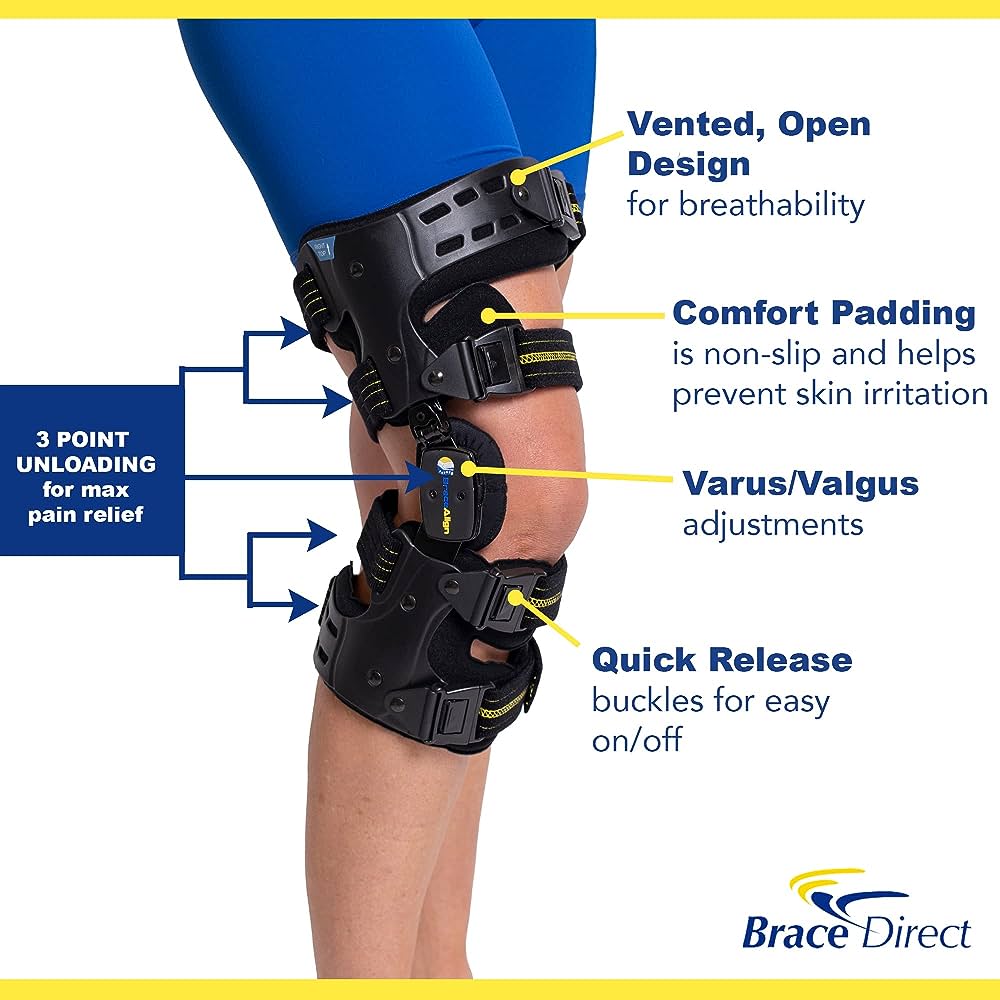
Benefits of Using Knee Braces
Using knee braces can offer numerous benefits, from pain relief to enhanced mobility and performance. Understanding these benefits can help individuals make an informed decision about whether to use knee braces or not.
Alleviation of Pain and Discomfort
One of the primary benefits of using knee braces is their ability to alleviate pain and discomfort. Whether caused by an injury, arthritis, or other knee conditions, the compression and support provided by a knee brace can help reduce pain, inflammation, and swelling, allowing individuals to go about their daily activities with reduced discomfort.
Stability and Support
Knee braces are designed to provide stability and support to the knee joint, which is particularly important for individuals with weakened or injured knees. By offering external support, knee braces can help improve joint alignment, prevent excessive movement, and reduce the risk of further injuries or damage.
Protection from Further Injuries
Knee braces act as a protective barrier, helping to prevent further injuries during physical activities. Whether participating in sports or engaging in everyday movements, the added support and stabilization provided by a knee brace can help reduce the risk of ligament tears, sprains, or other knee-related injuries.
Enhanced Mobility and Performance
For athletes or individuals looking to maintain an active lifestyle, knee braces can help enhance mobility and performance. By providing stability and support to the knee joint, knee braces allow individuals to move with confidence and perform daily activities, sports, or exercises with reduced pain and improved efficiency.
Conditions and Injuries that can be Managed with Knee Braces
Knee braces can be used to manage a wide range of conditions and injuries involving the knee joint. Some of the most common conditions and injuries that can benefit from the use of knee braces include:
Arthritis
Knee braces, particularly unloader braces, can provide relief for individuals with knee osteoarthritis, a degenerative joint condition. These braces help reduce pain and improve joint function, allowing individuals to engage in activities with less discomfort.
Anterior Cruciate Ligament (ACL) Injuries
ACL injuries are common among athletes and often require surgical intervention. After surgery, a rehabilitative knee brace can help support the knee joint, protect the healing ACL, and assist in the rehabilitation process.
Posterior Cruciate Ligament (PCL) Injuries
Similar to ACL injuries, PCL injuries can be managed with the help of rehabilitative knee braces. These braces provide controlled movement and support to protect the healing ligament and promote proper healing.
Medial Collateral Ligament (MCL) Injuries
MCL injuries are often caused by sudden twisting or direct impact to the knee. Knee braces, such as functional braces, can provide stability and support to the knee joint and help manage MCL injuries.
Runner’s Knee
Runner’s knee, also known as patellofemoral pain syndrome, is a common condition that causes pain at the front of the knee. Kneecap stabilizing braces can help individuals with runner’s knee by providing support and alignment to the patella, reducing pain and improving knee function.
Patellar Tendonitis
Patellar tendonitis, also known as jumper’s knee, is characterized by pain and inflammation in the patellar tendon. Knee braces can help manage this condition by reducing stress on the tendon and providing support during physical activities.
Meniscus Tears
Meniscus tears are common knee injuries that can be managed with the help of knee braces, particularly rehabilitative braces. These braces provide controlled movement and support to protect the healing meniscus and aid in the rehabilitation process.
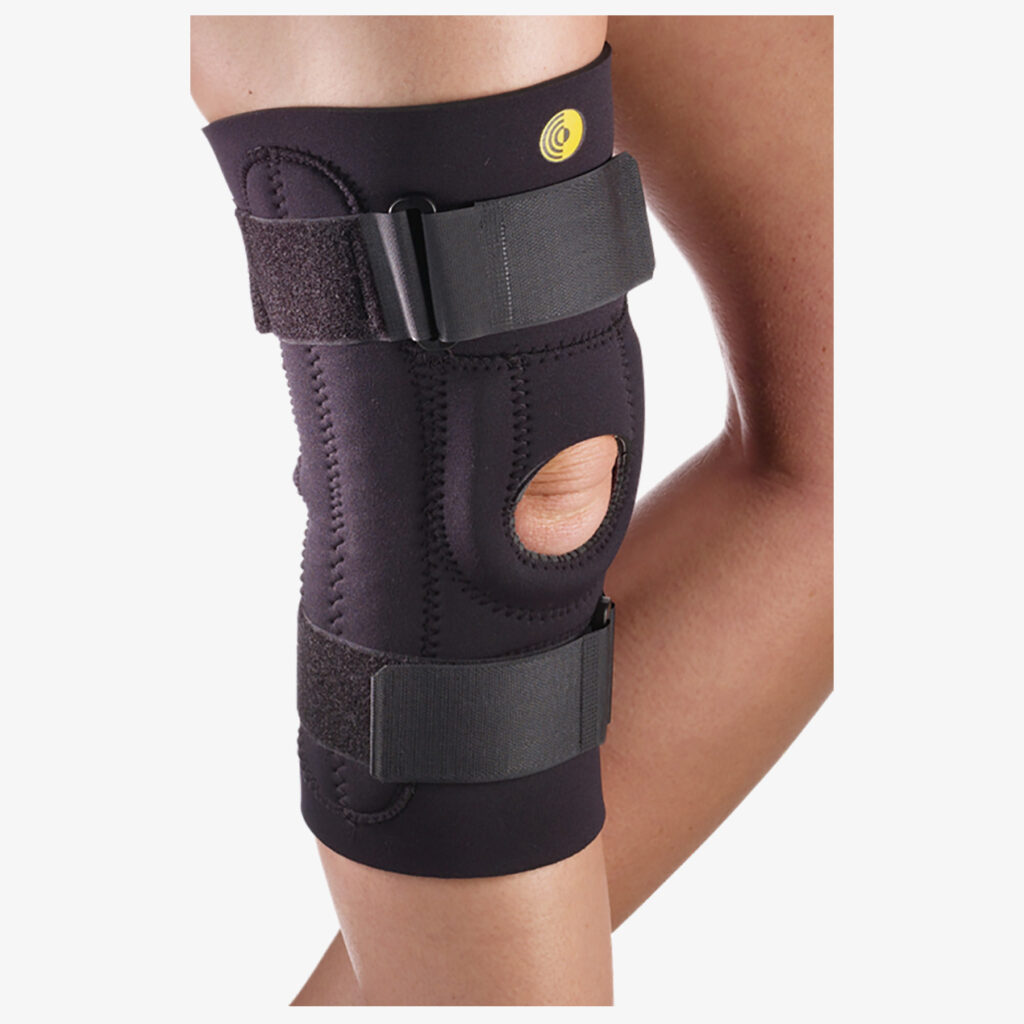
How to Choose the Right Knee Brace
Choosing the right knee brace depends on various factors, including consultation with a medical professional, consideration of the injury or condition, proper sizing and fit, specific features and adjustability, comfort and breathability, as well as cost and durability.
Consultation with a Medical Professional
Before purchasing a knee brace, it is crucial to consult with a medical professional, such as a doctor or physical therapist. They can provide valuable insight into your specific condition or injury and recommend the most suitable type of knee brace.
Consideration of the Injury or Condition
Different knee braces are designed to cater to specific injuries or conditions. Understanding the nature of your injury or condition will help you choose the right type of knee brace that offers the necessary support and stability.
Proper Sizing and Fit
A properly fitting knee brace is essential for its effective use. It is important to carefully measure your knee size and refer to the manufacturer’s sizing chart to ensure a snug and comfortable fit. Ill-fitting knee braces may hinder their intended benefits or cause discomfort.
Specific Features and Adjustability
Knee braces come with various features and adjustability options. Depending on your needs, consider whether you require additional features, such as adjustable straps, hinges, or padding, to provide the desired level of support and comfort.
Comfort and Breathability
Comfort and breathability are crucial factors to consider when choosing a knee brace, especially if you are planning to wear it for extended periods or during physical activities. Look for braces made from breathable materials and consider features that promote comfort, such as moisture-wicking fabrics or padded interiors.
Cost and Durability
While cost is an important consideration, it should not be the sole determining factor. Investing in a high-quality knee brace that offers durability and long-term use can be more beneficial in the long run than opting for a cheaper, less durable option.
Proper Usage and Care for Knee Braces
To ensure the effectiveness and longevity of your knee brace, it is important to follow the manufacturer’s instructions and take proper care of the brace.
Follow Manufacturer’s Instructions
Read and follow the manufacturer’s instructions regarding the proper usage, wearing time, and any specific care instructions for your knee brace. This will help you maximize the benefits of the brace and maintain its effectiveness.
Wear Time and Adjustment
It is important to wear your knee brace according to the recommended wearing time and adjust it properly to ensure a secure fit and optimal support. Wearing the brace for more extended periods than recommended may compromise its effectiveness, while wearing it for a shorter time may not provide the desired relief or support.
Cleaning and Maintenance
Regular cleaning and maintenance are essential to keep your knee brace in good condition. Follow the manufacturer’s cleaning instructions, which may involve hand-washing or using mild detergents. Proper maintenance will help prevent odors, bacteria buildup, and prolong the lifespan of your knee brace.
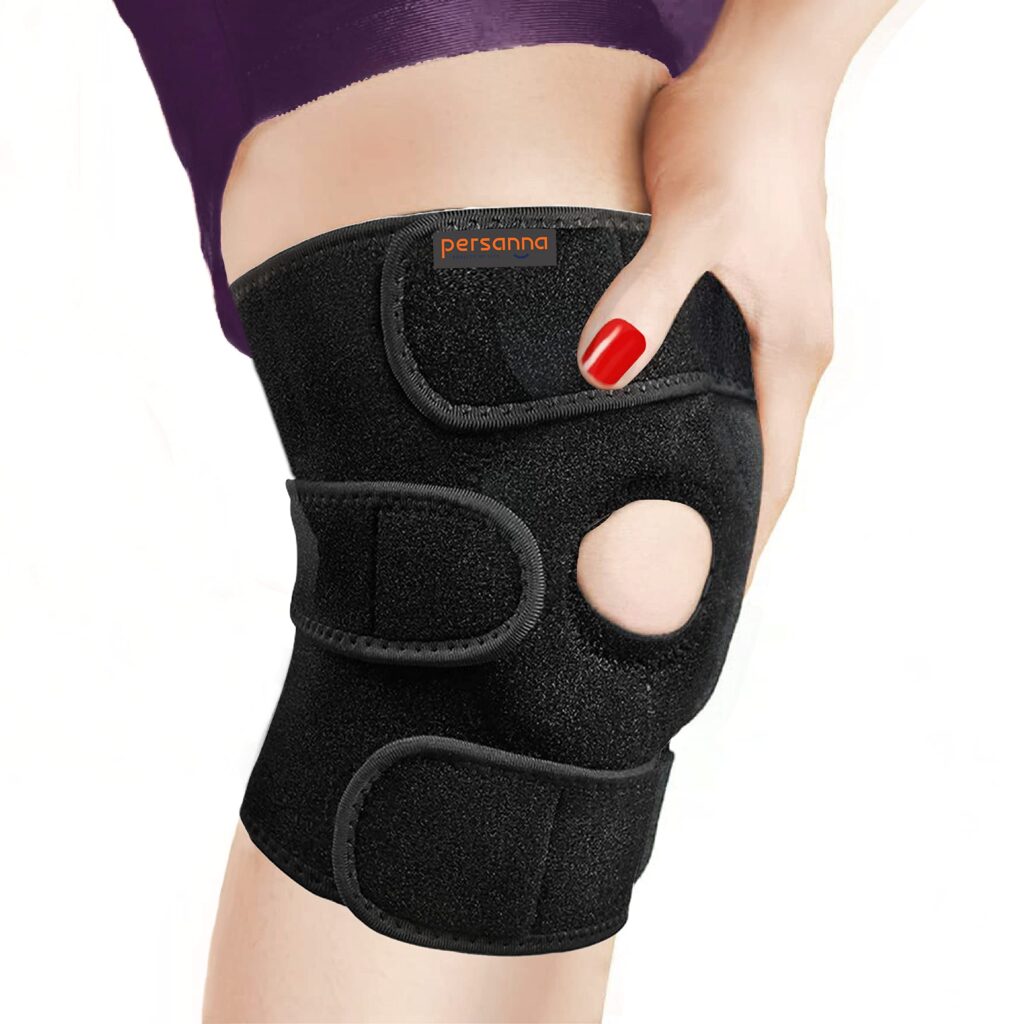
Possible Risks and Precautions with Knee Braces
While knee braces offer numerous benefits, there are some potential risks and precautions to be aware of before using them.
Allergic Reactions
Some individuals may have allergies or sensitivities to certain materials used in knee braces. It is important to be aware of any potential allergic reactions and discontinue use if you experience any adverse effects.
Skin Irritations
Prolonged or excessive wear of knee braces can lead to skin irritations, such as rashes or abrasions. To minimize the risk of skin irritations, ensure your brace is clean, properly fitted, and doesn’t rub against the skin excessively.
Decreased Muscle Strength
Regularly relying on knee braces for support without engaging in physical therapy or exercise to strengthen the surrounding muscles can lead to decreased muscle strength over time. It is important to maintain a balance between using the knee brace for support and actively participating in rehabilitation exercises to promote muscle strength and stability.
Dependency on Braces
Over-reliance on knee braces for support and pain relief can create a dependency on them. While knee braces can be helpful in managing knee conditions, it is important to work towards long-term solutions, such as strengthening the muscles and addressing the underlying causes of knee pain.
Other Measures to Support Knee Health
In addition to using knee braces, there are several other measures you can take to support knee health and prevent injuries.
Regular Exercise and Stretching
Engaging in regular exercise programs and incorporating stretching exercises can help strengthen the muscles around the knee joint, improve flexibility, and reduce the risk of injuries.
Maintaining a Healthy Weight
Maintaining a healthy weight reduces the stress on the knee joints, which can help prevent knee-related conditions and injuries, such as osteoarthritis.
Avoiding High-Impact Activities
Participating in high-impact activities, such as jumping or running on hard surfaces, can put excessive stress on the knee joints. Limiting or avoiding such activities can help reduce the risk of knee injuries.
Proper Footwear
Wearing appropriate footwear that provides proper support and cushioning is essential for good knee health. Shoes with shock-absorbing soles and arch support can help reduce stress on the knees during physical activities.
Physical Therapy
If you have a knee injury or ongoing knee issues, seeking guidance from a physical therapist can be beneficial. A physical therapist can create a personalized exercise program to address any weaknesses, improve knee stability, and aid in the rehabilitation process.

When to Consult a Medical Professional
While knee braces can help manage various conditions and injuries, there are situations when it is essential to consult a medical professional.
Persistent or Worsening Pain
If you are experiencing persistent or worsening pain despite using a knee brace, it is important to consult a medical professional. They can evaluate your condition and provide further guidance or treatment options.
Limited Range of Motion
If you are unable to fully move your knee or experiencing significant limitations in your range of motion, it is important to seek medical advice. Limited range of motion may indicate an underlying issue that requires attention and appropriate treatment.
Visible Swelling or Deformity
Visible swelling or deformity of the knee joint should be assessed by a medical professional. These symptoms may suggest a more severe injury or condition that requires immediate attention.
Signs of Infection
If you notice signs of infection, such as increased redness, warmth, pain, or discharge from around the knee brace or the site of an injury, seek medical attention promptly. Infections can lead to further complications if left untreated.
Conclusion
Knee braces can be valuable tools in managing various knee conditions and injuries, providing stability, support, and pain relief. Whether you are an athlete recovering from an injury or an individual with chronic knee pain, the right knee brace can enhance your mobility, improve performance, and contribute to a pain-free life. However, it is important to choose the right knee brace for your specific needs, follow proper usage and care instructions, and consult a medical professional when necessary. By combining the use of knee braces with other measures such as regular exercise, maintaining a healthy weight, and proper footwear, you can support knee health and reduce the risk of injuries in the long term. Always prioritize your knee’s well-being and seek professional advice when needed to maintain a pain-free and active lifestyle.
